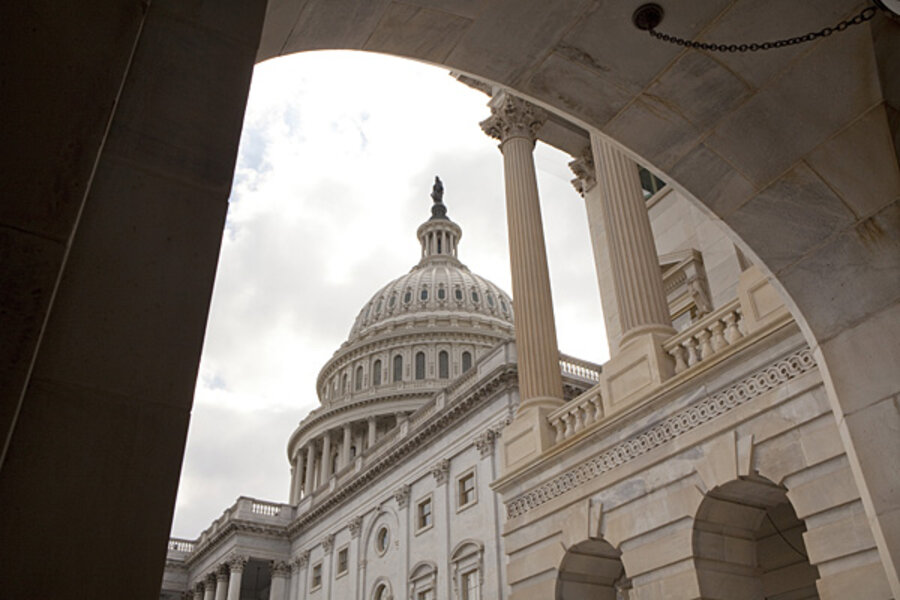Health cost growth slows. Time to rethink budget debate?
Loading...
Upon these three facts everyone agrees: 1) After a long period of explosive increases, health cost growth has slowed markedly in recent years. 2) A share of the slowdown is partially, but not entirely, due to the recent economic slump. 3) If future medical costs continue to grow at their current low rate the federal budget will be in much better shape than most analysts thought.
However, the best health economists in the country are deeply divided about #2. And the implications of this disagreement are profound. If the recession was the major driver of lower health cost growth, there is a good chance that medical spending will bump up again as the economy improves, once again putting great pressure on the deficit. But if the slump was only a small part of a broader secular trend, the U.S. may have found the key to solving its long-term budget problems.
Keep in mind that all health care costs are growing more slowly, not just government-funded programs such as Medicare and Medicaid. But since TaxVox focuses its attention on fiscal issues, I’ll concentrate on the budget effects.
In a new article in the journal Health Affairs, Harvard University economists David Cutler and Nikhil Sahni estimate that medical costs grew by only 1.2 percent from 2009-2012, far below the 5.9 percent rate of 2000-2009. If the recent spending trend could somehow be sustained for the next decade, they estimate the deficit would be $770 billion less than the Congressional Budget office forecasts.
But that assumes the present trend can continue. And that in turn assumes that more is going on than consumers beaten down by the recession buying less medical care.
How deeply do economists disagree about this diagnosis? At first glance, quite a lot. But a closer look suggests that even skeptics of the secular change argument see some hope that the worst years of health spending increases may be behind us.
For instance, while Cutler and Sahni lay only about one-third of the slowdown in health costs at the feet of the recession, an April study by researchers at the Kaiser Family Foundation and the Altarum Institute estimated that more than three-quarters was driven by the Great Recession.
In their own just-released paper, my Urban Institute colleagues John Holahan and Stacey McMorrow focus on yet a third cause. They agree that medical cost growth has slowed in response to economic trends, but they focus on changes that are broader than, and predate, the recession. They blame a combination of falling real incomes and the loss of insurance benefits as employers offer less generous coverage, people lose coverage entirely, or get coverage through public programs. They argue both trends are drawing money out of the medical system and forcing providers to operate more efficiently.
But here is where it gets interesting. While their analyses differ on causes, the authors of all these studies agree that there is at least the potential for secular changes to slow costs in the future. And none are especially certain about the magnitude.
Even the authors of the Kaiser/Altarum paper, Kaiser’s Larry Levitt and Gary Claxton; Altarum’s Charles Roehrig; and Thomas Getzen of the Fox School of Business at Temple University, say changes in practice patterns, driven by both the ACA and economics, could slow future cost growth. Their main argument is it far too soon for cost changes from the payment and delivery reforms of the 2010 Affordable Care Act to show up in current cost statistics, not that these reforms won’t eventually slow spending by measurable amounts.
Of course, cost savings from more efficient delivery of care is likely to be partially offset by an increase in the demand for medical care driven by the ACA’s major goal–increasing the number of consumers with health insurance.
And even Cutler, who sees real secular change in health costs, acknowledges he can only speculate on what’s happening. For him, while the recession’s role in the health spending slowdown was modest, the true causes remain only ideas for conjecture: Some combination of changing technology, increased cost-sharing by patients, and greater efficiency by providers.
Are we seeing the bow-wave of a permanent trend as Cutler believes? I see real changes in health care delivery. But will they stick and both save money and improve health outcomes? In truth, no-one knows.
The answers will go far beyond federal budgets, but they are sure to drive the fiscal debate in some important and perhaps unexpected ways.







